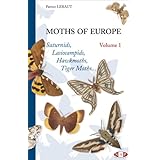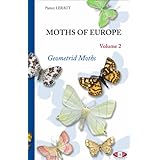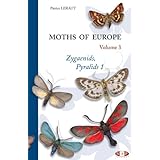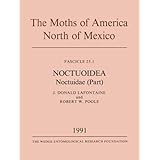The genus Xyroptila includes four Indo-Australian species described by Meyrick in 1908 (X. oenophanes, X. peltastes and X. marmarias) and Fletcher in 1909 (X. vaughani), along with a central African species described by Bigot in 1969 (X. africana).
In 2006, Kovtunovich and Ustjuzhanin published a paper in the journal Atalanta 37 (1/2): 249-276, The genus Xyroptila MEYRICK, 1908 in the world fauna: new species, new records and taxonomic comments. This paper adds 19 new species to the genus (11 Indo-Australian, 7 African and 1 from Peru). Each species is briefly (re-)described and high-quality genitalia drawings are offered (both sexes for 10 species, male only for 9 species and female only for 5 species). A few specimens are illustrated with colour photos, but reproduction does not facilitate fine comparison of external characters. The species originally described by Meyrick as Oxyptilus caminites had also been assigned to this genus, but Kovtunovich and Ustjuzhanin determined that it does not belong here, although details for their decision are not provided.
In 2007, Gielis and de Vos added one more species from Papua (http://www.zobodat.at/pdf/ENT_0028_0185-0200.pdf). At the same time, they commented on the 2006 paper as follows: "In a recent review (KOVTUNOVICH & USTJUZHANIN, 2006) of the genus Xyroptila a great number of new species were described. This has, on species level, substantially increased the knowledge of this genus. There is, however, a down side to this publication. Without a proper genus description, which is not present in the cited publication, it is difficult, if not impossible, to find the arguments used by the authors to comment on earlier publications, nor could the reason be detected which they used to place the treated species in the current genus. Also the removing of species out of this genus, without explaining the reason for this decision, and without indicating where that species has to be placed must be considered very poor, and not convincing."
There are other issues with the 2006 paper, some of which I discuss below. One important point is that both Xyroptilia naivasha and Xyroptila naiwasha are provided as spellings for the name of one of the new species. According to the zoological code, the spelling for this species name is not settled until the first time the species is revised. Kovtunovich and Ustjuzhanin state that the female presented by Bigot in his original description for X. africana is in fact the female for their new species, X. ruvenzori.
Personally, I lament the absence in the recent species descriptions of any detail or illustration of the external abdominal markings, since these are so often distinctive. Most published photographs in such treatments show the specimen after dissection - I cannot understand why materials are not photographed before removal of the abdomen. Earlier treatments, such as those from Meyrick and Fletcher, are much more usable in this respect.
The expansion of the genus to 25 currently accepted species (or perhaps 26, if X. caminites has been excluded on insufficient grounds) has made it difficult to assign identifications to individuals of this genus illustrated live in photographs on the web. This note is an attempt to establish basic information to assist with identifying individuals illustrated in iNaturalist and elsewhere.
It should also be noted that some species in the genera Nippoptilia and Leptodeuterocopus are relatively close to Xyroptila in appearance. See examples from Papua here.
The following groups the species according to the three regions indicated above, leaving the whole "Indo-Australian" group as one, since species ranges overlap in this area. For each species, I have organised the information provided for external characteristics in Kovtunovich & Ustjuzhanin 2006. In a few cases, I have filled gaps by interpreting their images. In the case of X. colluceo, I have selected the equivalent information from Gielis & de Vos 2007.
As I discuss in this later post, there are real problems with interpreting some characters given by Kovtunovich & Ustjuzhanin. The following should therefore be seen only as a convenient summary of their descriptions.
Indo-Australian species
Xyroptila oenophanes Meyrick, 1908
Meyrick's original description here
Distribution: India, Sri Lanka, Taiwan, China, Japan, Vietnam, Malaysia, Myanmar, Indonesia, ? New Guinea, ?? Africa
Head, thorax and tegulae: Brown interspersed with lighter scales
Labial palpi colouration: White at base, brown apically
Lapial palpi length against eye diameter: 2x
Labial palpi shape: Elephant tusk
Antennae: Chequered with patches of brown and white scales
Forewing: Brown with white or yellowish spots
Forewing length: 11mm
Concave forewing lobes: 2nd only
Fringe inside cleft: Light with dark hair close to tips of lobe
Forewing dorsal fringe: Yellow with dark patches at base, centre and apex
Hindwings : Plain brown
Hindwing 3rd lobe length against 2nd: Shorter
Hindwing 3rd lobe apical scale tooth: Absent
Hind legs: Dark brown with some patches of light scales
Abdomen: (From Meyrick's original description) Rather dark fuscous, base ochreous-white, beneath whitish
Xyroptila oksana Kovtunovich & Ustjuzhanin, 2006
See this iNaturalist observation
Distribution: India, Sri Lanka, Indonesia
Head, thorax and tegulae: Reddish-brown
Labial palpi colouration: Brown
Lapial palpi length against eye diameter: 2x
Labial palpi shape: Elephant tusk
Antennae: Evenly chequered with brown and white patches
Forewing: Reddish brown with yellow-orange spots at centre of wing and at base of cleft, and slanting orange band in distal part of fore lobe, continuing to base of cleft oh hind lobe
Forewing length: 10-11mm
Concave forewing lobes: ?2nd slightly (from painting)
Fringe inside cleft: White with dark patches close to outer margin
Forewing dorsal fringe: Patches of yellow and brown hair
Hindwings : Brown
Hindwing 3rd lobe length against 2nd: Less than half
Hindwing 3rd lobe apical scale tooth: Absent
Hind legs: Light brown mottled with yellowish and brown patches, and erect clusters of brown scales at base of spurs
Other: Outer fringe of first forewing lobe brown, second white in middle and brown at sides
Xyroptila soma Kovtunovich & Ustjuzhanin, 2006
Distribution: India
Head, thorax and tegulae: Dark brown
Labial palpi colouration: Unknown
Lapial palpi length against eye diameter: Unknown
Labial palpi shape: Unknown
Antennae: Dark brown
Forewing: Plain dark brown, with only a yellowish spot between base of wing and cleft / with yellow-orange spots at centre of wing and base of cleft, and a slanting orange band situated distally in the middle of the fore lobe and continuing onto the hind lobe to the base of the cleft
Forewing length: 12mm
Concave forewing lobes: 1st only
Fringe inside cleft: Light brown with dark patches close to outer margin
Forewing dorsal fringe: Yellowish-brown with dark patches at middle, under base of cleft and at apex of 2nd lobe
Hindwings : Dark brown
Hindwing 3rd lobe length against 2nd: Half
Hindwing 3rd lobe apical scale tooth: Absent
Hind legs: Dark brown
Xyroptila vaughani (Fletcher, 1909)
Fletcher's original description of Oxyptilus vaughani here
Distribution: Sri Lanka
Head, thorax and tegulae: Dark brown
Labial palpi colouration: Chequered brown and whitish
Lapial palpi length against eye diameter: Almost 2x
Labial palpi shape: Not specified
Antennae: Dark brown with patches of yellowish scales
Forewing: Dark brown with white spots and scales
Forewing length: 10mm
Concave forewing lobes: Both
Fringe inside cleft: Plain dark brown
Forewing dorsal fringe: Yellow with dark patches at middle, under base of cleft and at apex
Hindwings : Plain reddish brown
Hindwing 3rd lobe length against 2nd: Half
Hindwing 3rd lobe apical scale tooth: Present
Hind legs: Chequered brown and white
Abdomen: (From Fletcher's original description) First segment and base of second segment pale sulphur-yellow, second, third, and fourth segments deep chestnut-bronze-brown, apical margin of fourth segment edged with a narrow transverse band of brilliant white scales, fifth segment thickly irrorated with white scales so as to form a distinct broad transverse bar across the abdomen, terminal segments deep reddish-purple; anal tuft long, apex yellowish-white
Xyroptila dohertyi Kovtunovich & Ustjuzhanin, 2006
Distribution: Thailand
Head, thorax and tegulae: Light brown
Labial palpi colouration: Earth-coloured on top, brown below
Lapial palpi length against eye diameter: 2x
Labial palpi shape: Straight
Antennae: Dark brown with lighter scales
Forewing: Dark brown with hardly any noticeable lighter scales
Forewing length: 13mm
Concave forewing lobes: 1st only
Fringe inside cleft: Yellow with dark patches close to outer margin
Forewing dorsal fringe: Yellow with dark patches at middle, under base of cleft and at apex
Hindwings : Plain dark brown
Hindwing 3rd lobe length against 2nd: Half
Hindwing 3rd lobe apical scale tooth: Well-expressed
Hind legs: Darn brown with white spots and rings
Xyroptila siami Kovtunovich & Ustjuzhanin, 2006
Distribution: Thailand, Myanmar, China
Head, thorax and tegulae: Brown, tegulae lighter
Labial palpi colouration: Brown
Lapial palpi length against eye diameter: 2-2.5x
Labial palpi shape: Tusk-like
Antennae: Dark brown
Forewing: Mottled with brown and yellowish patches, apex mid-brown with hardly noticeable narrow yellowish band
Forewing length: 14mm
Concave forewing lobes: 1st only
Fringe inside cleft: Light brown with dark patches close to outer margin
Forewing dorsal fringe: Yellow with three dark patches at outer margin
Hindwings : Dark brown and yellow
Hindwing 3rd lobe length against 2nd: Half
Hindwing 3rd lobe apical scale tooth: Absent
Hind legs: Light brown with darker rings at base of spurs and joints; tibiae with white spots and scattered scales
Xyroptila aenea Kovtunovich & Ustjuzhanin, 2006
Distribution: Indonesia
Head, thorax and tegulae: Dark brown
Labial palpi colouration: Brown
Lapial palpi length against eye diameter: 2-2.5x
Labial palpi shape: Elephant tusk
Antennae: Dark brown
Forewing: Copper red with orange spots
Forewing length: 11mm
Concave forewing lobes: 1st only
Fringe inside cleft: Yellow with dark patches close to outer margin
Forewing dorsal fringe: Yellow with dark patches under base of cleft and at apex of 2nd lobe
Hindwings : Plain brown
Hindwing 3rd lobe length against 2nd: Half
Hindwing 3rd lobe apical scale tooth: Absent
Hind legs: Dark brown
Xyroptila elegans Kovtunovich & Ustjuzhanin, 2006
Distribution: Indonesia, New Guinea, Australia
Head, thorax and tegulae: Dark brown
Labial palpi colouration: Light brown
Lapial palpi length against eye diameter: 2-2.5x
Labial palpi shape: Elephant tusk
Antennae: Chequered with rings of white and brown scales
Forewing: Mottled with brown and yellow-orange patches
Forewing length: 14-15mm
Concave forewing lobes: Both
Fringe inside cleft: Yellow with dark patches close to outer margin
Forewing dorsal fringe: Yellow with dark patches at centre, under base of cleft and at apex of 2nd lobe
Hindwings : Brown
Hindwing 3rd lobe length against 2nd: Half
Hindwing 3rd lobe apical scale tooth: Well-expressed
Hind legs: Light brown with darker rings at base of spurs and joints
Xyroptila kuranda Kovtunovich & Ustjuzhanin, 2006
Distribution: Indonesia, Australia
Head, thorax and tegulae: Brown
Labial palpi colouration: Brown, 2nd segment light brown above and black below, 3rd segment black
Lapial palpi length against eye diameter: 2-2.5x
Labial palpi shape: Tusk-like
Antennae: Dark brown
Forewing: Violet iridescence, mottled with brown and yellow-orange patches
Forewing length: 10-11mm
Concave forewing lobes: 1st only
Fringe inside cleft: Yellow with dark patches close to apex
Forewing dorsal fringe: Yellow with dark patch under apex of 2nd lobe
Hindwings : Brown
Hindwing 3rd lobe length against 2nd: Half
Hindwing 3rd lobe apical scale tooth: Absent
Hind legs: Brown
Xyroptila marmarias Meyrick, 1908
Meyrick's original description here
Papuan specimen here
Distribution: New Guinea, Australia
Head, thorax and tegulae: Light brown
Labial palpi colouration: 3rd segment darker than 2nd
Lapial palpi length against eye diameter: Almost 3x
Labial palpi shape: Elephant tusk
Antennae: Dark brown
Forewing: Reddish brown with yellow spots
Forewing length: 11mm
Concave forewing lobes: Both
Fringe inside cleft: Yellow with dark patches at tips of lobe
Forewing dorsal fringe: Yellow with dark hairs under base of cleft and tip of 2nd lobe
Hindwings : Plain reddish brown
Hindwing 3rd lobe length against 2nd: Half
Hindwing 3rd lobe apical scale tooth: Absent
Hind legs: Yellow with tarsi noticeably darkened
Abdomen: (From Meyrick's original description) Bright golden-bronze, base of first segment yellowish-white, margins of second and third segments more or less whitish, towards middle and apex more or less suffused with dark coppery-fuscous
Xyroptila colluceo Gielis & de Vos, 2007
Colour photograph of holotype here
Distribution: New Guinea
Head, thorax and tegulae: Head appressed scaled, dorsally brown, frons orange brown; thorax and tegular shining orange; mesothorax shining orange with sparse white scales
Labial palpi colouration: 2nd segment orange-brown above, brown below, 3rd segment brown
Lapial palpi length against eye diameter: 3x
Labial palpi shape: Curved upwards
Antennae: Dark brown with sparse white scales
Forewing: Bright orange with dark brown markings; basal darkening along 1/4 of wing along costa and dorsum; discal spot extending to costa; costal and dorsal spot at base of cleft; transverse band in centre of both lobes; subterminal darkening in both lobes
Forewing length: 10mm
Concave forewing lobes: 2nd only (base on image, 1st lacking termen)
Fringe inside cleft: Orange-grey with outer third dark grey
Forewing dorsal fringe: Orange-grey with brush at 6/7 and dark at apex
Hindwings : Dark brown, 3rd lobe orange-brown, fringes orange-grey
Hindwing 3rd lobe length against 2nd: Half
Hindwing 3rd lobe apical scale tooth: Absent
Hind legs: Shining orange; two pairs of spurs of equal length; small brown scale brush at base os spurs; tarsal segments dark brown
Xyroptila falciformis Kovtunovich & Ustjuzhanin, 2006
Distribution: New Guinea
Head, thorax and tegulae: Brown scales
Labial palpi colouration: Brown
Lapial palpi length against eye diameter: 2x
Labial palpi shape: Curved upwards
Antennae: Dark brown
Forewing: Mottled with brown and yellowish patches
Forewing length: 12-13mm
Concave forewing lobes: 2nd only
Fringe inside cleft: Yellow with dark patches only close to apex
Forewing dorsal fringe: Brown with dark patch close to apex
Hindwings : Light brown, with distinct darkening at apex of 3rd lobe
Hindwing 3rd lobe length against 2nd: Half
Hindwing 3rd lobe apical scale tooth: Absent
Hind legs: Light brown with darker rings at base of spurs and joints
Xyroptila maklaia Kovtunovich & Ustjuzhanin, 2006
Distribution: New Guinea
Head, thorax and tegulae: Light brown
Labial palpi colouration: Muddy-white above, brown below
Lapial palpi length against eye diameter: 2-2.5x
Labial palpi shape: Elephant tusk
Antennae: Dark brown
Forewing: Mottled with brown and yellow-orange patches
Forewing length: 12mm
Concave forewing lobes: 2nd only
Fringe inside cleft: Yellow with dark patches close to outer margin
Forewing dorsal fringe: Yellow with dark patch only at apex of 2nd lobe
Hindwings : Brown, 3rd lobe lighter with darkened apex
Hindwing 3rd lobe length against 2nd: Half
Hindwing 3rd lobe apical scale tooth: Absent
Hind legs: Light brown with darker rings at base of spurs and joints
Xyroptila variegata Kovtunovich & Ustjuzhanin, 2006
Distribution: New Guinea
Head, thorax and tegulae: Brown
Labial palpi colouration: Not specified
Lapial palpi length against eye diameter: 2x
Labial palpi shape: Elephant tusk
Antennae: Brown with patches of light scales
Forewing: Mottled with brown and yellow-orange patches
Forewing length: 13mm
Concave forewing lobes: 2nd only
Fringe inside cleft: Plain light brown with dark patch at base of 2nd lobe
Forewing dorsal fringe: Light brown with dark patch at apex of 2nd lobe
Hindwings : Brown, darker than forewing
Hindwing 3rd lobe length against 2nd: Half
Hindwing 3rd lobe apical scale tooth: Large
Hind legs: Light brown with darker rings at bsae of spurs and joints
Xyroptila peltastes (Meyrick, 1908)
Meyrick's original description of Oxyptilus peltastes here
Image of live individual in Queensland here
Distribution: Australia
Head, thorax and tegulae: Reddish-brown
Labial palpi colouration: White at base, brown at extremity
Lapial palpi length against eye diameter: 2x
Labial palpi shape: Directed forward
Antennae: Chequered, dark brown with greyish rings
Forewing: Bright reddish brown with yellow spots and patches of white scales
Forewing length: 13mm
Concave forewing lobes: Both
Fringe inside cleft: Greyish-yellow with dark close to base and outer margin
Forewing dorsal fringe: Light brown with dark patches at base, centre and apex
Hindwings : Plain reddish brown
Hindwing 3rd lobe length against 2nd: Half
Hindwing 3rd lobe apical scale tooth: Present
Hind legs: Dark brown with tarsi and bases of spurs almost black
Xyroptila uluru Kovtunovich & Ustjuzhanin, 2006
Distribution: Australia
Head, thorax and tegulae: Light brown
Labial palpi colouration: Light brown, darkening towards apex
Lapial palpi length against eye diameter: 2-2.5x
Labial palpi shape: Tusk-like
Antennae: Dark brown with regular patches of lighter scales
Forewing: Light brown with grey spots, lighter-coloured band at apex of 1st lobe, distal part of both lobes dark brown
Forewing length: 11mm
Concave forewing lobes: 2nd only
Fringe inside cleft: Yellow with dark patches close to apex
Forewing dorsal fringe: Yellow with dark patches under base of cleft and at apex of 2nd lobe
Hindwings : Plain light brown with light fringe
Hindwing 3rd lobe length against 2nd: Half
Hindwing 3rd lobe apical scale tooth: Absent
Hind legs: Brown with darker rings at base of spurs and joints
African species
Xyroptila africana Bigot, 1969
Distribution: Congo, Nigeria
Head, thorax and tegulae: Dark brown scales
Labial palpi colouration: Not specified
Lapial palpi length against eye diameter:
Labial palpi shape:
Antennae: Plain dark brown
Forewing: Dark brown with yellowish patches scattered over whole wing
Forewing length: 13mm
Concave forewing lobes: 2nd only
Fringe inside cleft: Yellow with dark patches at base
Forewing dorsal fringe: Light yellow with dark patches at base, centre and under base of cleft
Hindwings : Plain dark brown
Hindwing 3rd lobe length against 2nd: Half
Hindwing 3rd lobe apical scale tooth: Absent
Hind legs: Brown with patches of yellow scales
Xyroptila fulbae Kovtunovich & Ustjuzhanin, 2006
Distribution: Nigeria, Principe I.
Head, thorax and tegulae: Dark brown scales, with yellow sides to thorax
Labial palpi colouration: Brown
Lapial palpi length against eye diameter: 2-2.5x
Labial palpi shape: Elephant tusk
Antennae: Chequered with yellow and brown
Forewing: Reddish-brown with orange spots at base, in centre and above and beliw cleft
Forewing length: 13-14mm
Concave forewing lobes: Both
Fringe inside cleft: Yellow with dark patches at base
Forewing dorsal fringe: Yellow with dark patches at middle, under base of cleft and at apex
Hindwings : Plain reddish brown
Hindwing 3rd lobe length against 2nd: Almost half
Hindwing 3rd lobe apical scale tooth: Absent
Hind legs: Light brown
"Other: Apical part of wing elongated
Outer spurs of hindwing (sic) very long, almost as long as 3rd lobe"
Xyroptila irina Kovtunovich & Ustjuzhanin, 2006
Distribution: Madagascar
Head, thorax and tegulae: Glittering brownish yellow scales
Labial palpi colouration: Brown
Lapial palpi length against eye diameter: 2-2.5x
Labial palpi shape: Elephant tusk
Antennae: Chequered with yellow and brown
Forewing: Dark and mottled with brown and yellowish scales
Forewing length: 14mm
Concave forewing lobes: Both
Fringe inside cleft: Yellow at base with dark patches from centre to outer margin
Forewing dorsal fringe: Yellow with dark patches at base of cleft and apex of 2nd lobe
Hindwings : Light brown with lobe apices darker
Hindwing 3rd lobe length against 2nd: Half
Hindwing 3rd lobe apical scale tooth: Absent
Hind legs: Mottled with yellowish and brown patches, and clusters of erect brown scales at base of spurs
Other: Apical part of wing elongated
Xyroptila masaia Kovtunovich & Ustjuzhanin, 2006
Black-and-white photograph of specimen from Congo here
Distribution: East Africa
Head, thorax and tegulae: Light brown scales
Labial palpi colouration: Brown
Lapial palpi length against eye diameter: 2-2.5x
Labial palpi shape: Elephant tusk
Antennae: Chequered with yellow and brown
Forewing: Mottled with brown and yellowish patches, distal section of centre of apex of wing lobe having an inclusion of yellowish scales
Forewing length: 12-13mm
Concave forewing lobes: 2nd slightly
Fringe inside cleft: Yellow with dark patches at outer margin
Forewing dorsal fringe: Yellow with dark patches at middle, under base of cleft and at apex
Hindwings : Light brown
Hindwing 3rd lobe length against 2nd: Half
Hindwing 3rd lobe apical scale tooth: Absent
Hind legs: Light brown with darkening at base of spurs and joints
Xyroptila monomotapa Kovtunovich & Ustjuzhanin, 2006
Distribution: Mozambique
Head, thorax and tegulae: Reddish-brown scales
Labial palpi colouration: Brown, darker distally
Lapial palpi length against eye diameter: 2-2.5x
Labial palpi shape: Tusk-like
Antennae: Chequered with yellow and brown
Forewing: Dark brown with noticeable dark yellow spots and bands
Forewing length: 12mm
Concave forewing lobes: 2nd only
Fringe inside cleft: Yellow with dark patches from middle to outer margin
Forewing dorsal fringe: Yellow with dark patches at middle, under base of cleft and at apex
Hindwings : Dark brown
Hindwing 3rd lobe length against 2nd: Half
Hindwing 3rd lobe apical scale tooth: Absent
Hind legs: Brown with darker rings at base of spurs
Xyroptila naiwasha Kovtunovich & Ustjuzhanin, 2006
Distribution: Kenya
Head, thorax and tegulae: Dark brown with mesothorax and part of tegulae lightened with yellowish scales
Labial palpi colouration: Brown
Lapial palpi length against eye diameter: 1.5x
Labial palpi shape: Slightly curved upwards
Antennae: Dark brown with patches of light scales
Forewing: Dark brown with yellow spots, especially at base of cleft on both lobes
Forewing length: 13mm
Concave forewing lobes: 2nd slightly
Fringe inside cleft: Dark brown at base
Forewing dorsal fringe: Brown with dark patch at apex of 2nd lobe
Hindwings : Plain dark brown
Hindwing 3rd lobe length against 2nd: Half
Hindwing 3rd lobe apical scale tooth: Strong
Hind legs: Not specified
Xyroptila ruvenzori Kovtunovich & Ustjuzhanin, 2006
Distribution: Uganda, Ghana
Head, thorax and tegulae: Copper brown glittering hair, sides of thorax bright yellow
Labial palpi colouration: Dark brown
Lapial palpi length against eye diameter: 2-2.5x
Labial palpi shape: Elephant tusk
Antennae:
Forewing: Reddish brown with patches of yellowish and white scales and two distinct longitudinal yellow spots at costal margin
Forewing length: 10-12mm
Concave forewing lobes: Both
Fringe inside cleft: Yellow with patches of dark hair at base
Forewing dorsal fringe: Light yellow with dark area just below apex
Hindwings : Plain reddish brown
Hindwing 3rd lobe length against 2nd: Almost half
Hindwing 3rd lobe apical scale tooth: Absent
Hind legs: Reddish brown
"Other: Apical part of wing elongated
Outer spurs of hindwing (sic) very long, almost as long as 3rd lobe"
Xyroptila zambesi Kovtunovich & Ustjuzhanin, 2006
Distribution: Zimbabwe
Head, thorax and tegulae: Dark brown scales
Labial palpi colouration: Light brown
Lapial palpi length against eye diameter: 2-2.5x
Labial palpi shape: Tusk-like
Antennae: Brown with regular patches of light scales
Forewing: Light brown with yellow spots, bands and tiny patches
Forewing length: 12mm
Concave forewing lobes: Both
Fringe inside cleft: Yellow with dark patches at outer margin
Forewing dorsal fringe: Yellow with dark patches at middle, under base of cleft and at apex
Hindwings : Plain dark brown
Hindwing 3rd lobe length against 2nd: Half
Hindwing 3rd lobe apical scale tooth: Absent
Hind legs: Light brown with darker rings at base of spurs and joints
Latin American species
Xyroptila sybylla Kovtunovich & Ustjuzhanin, 2006
Distribution: Peru
Head, thorax and tegulae: Reddish brown scales
Labial palpi colouration: Brown
Lapial palpi length against eye diameter: 2-2.5x
Labial palpi shape: Tusk-like
Antennae: Dark brown with regular patches of lighter scales
Forewing: Dark brown with dark yellow spots and bands
Forewing length: 13mm
Concave forewing lobes: 2nd only
Fringe inside cleft: Yellow with dark patches close to outer margin
Forewing dorsal fringe: Yellow with dark patches under base of cleft and at apex of 2nd lobe
Hindwings : Dark brown, fringe of first two lobes light, slightly darkened at apex
Hindwing 3rd lobe length against 2nd: Half
Hindwing 3rd lobe apical scale tooth: Present
Hind legs: Light brown with darker rings at base of spurs and joints






































